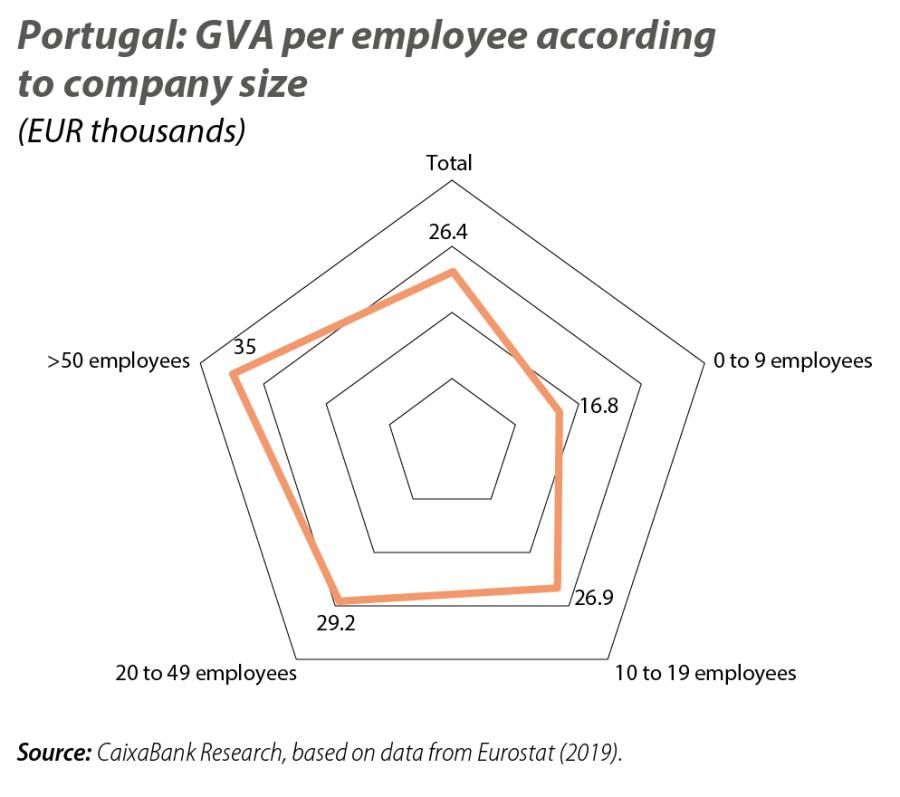Productivity in Portugal: magic ingredient or main course?

It is common to find references in the media to productivity as the «magic ingredient» for solving many economic problems and as a way of narrowing the pay gap between the Portuguese population and their European counterparts. However, productivity is not an ingredient, but an outcome, and its nature and fundamentals are topics that are seldom talked about. Let us take a look at what is meant by productivity, how to measure it and Portugal’s position in the international context.
Put simply, productivity is the level of output that is generated with a certain level of inputs. An optimal combination or management of resources, or inputs, means more efficiency, which leads to higher productivity and, ultimately, enables the creation of greater prosperity.
Labour is one of the most important factors of production and the ratio of the amount of this labour factor that is used to generate a unit of GDP is the most widely used measure of productivity. The indicator developed by the OECD, which divides an economy’s GDP by the number of hours worked, expresses the value that is created per unit of labour used (hours of work) and it is more accurate than measures comparing output to the number of workers. As the first chart shows, there is a gap between Portugal’s productivity level and that of the EU and OECD countries. In 2020 (latest year with available data), Portugal’s GDP per hour worked was 73% of the EU value and only 66% of that of the euro area countries. More concerning than the gap itself is the fact that it has been widening in recent times, such that productivity in Portugal has increased less than in the other economies analysed. Specifically, productivity in Portugal has increased by 20% since 2000, compared to 29% in the OECD and 24% in the EU.

Thus, one of the keys to boosting productivity growth lies in an economy’s level of human capital. Workers with a higher education level and who are technically more qualified are more productive.1Another key element is the evolution of productive capital per employee. In this respect, Portugal also fares worse when compared to the rest of the euro area countries, ranking 14th out of 19 countries. Productive capital is accumulated through investment, and on this point Portugal also falls far short of the EU: gross fixed capital formation (excluding construction assets) represented 8.6% of GDP in 2020, compared to 11.2% for the EU. On the positive side, Portugal has a higher percentage of its GFCF dedicated to ICT equipment assets compared to the EU (4.6% vs. 3.3%, in 2019), which are so relevant in the current context of the digital transition.
- 1. See A. Gouveia, S. Santos and I. Gonçalves (2017). «The impact of structural reforms on productivity: the role of the distance to the technological frontier». OECD Productivity Working Papers, 2017-08. OECD Publishing, Paris. This study demonstrates long-term productivity gains as a result of investment/reforms in education.

Lower capital intensity can mean there are fewer «tools» available to workers and less overall productivity. That said, there are some nuances to consider. Firstly, it should be borne in mind that a flexible productive fabric that is capable of replacing the capital factor with the labour factor, if the latter is abundant and cheap, can also explain a lower capital intensity. Secondly, the increase in an economy’s overall productivity can also be due to a shift in factors of production, specifically in labour, from less productive sectors to more productive sectors, even without any alteration in the intensity of capital. Of course, this second aspect is more difficult the more rigid the labour market. Moreover, it has been noted that in periods when there is greater difficulty in hiring workers and when economies are approaching full employment, companies tend to make better use of the technology they already possess. In other words, faced with the impossibility of increasing the labour factor or with an increase in the cost of labour, economies make better use of the potential of the existing technological infrastructure.
On the other hand, a key aspect of productivity is the size of companies. In Portugal, the productivity level of large companies is more than twice that of micro-enterprises. Several studies highlight that large companies are more likely to invest in intangible assets and highlight this investment as a catalyst for productivity growth.2 In fact, there are several aspects which help to boost productivity and which, due to their «intangible» nature, often appear as intermediate costs rather than investment: management and organisational efficiency models, marketing, brand value, databases, specific internally-developed training or software are examples of this. In highly developed economies that are close to the technological frontier, these aspects are even more critical to productivity growth. So, when we talk about the future of productivity in Portugal, we must also look at other aspects that enable companies to succeed in this context and observe new indicators. Some examples in this regard include the percentage of GDP that is allocated to research and development (particularly in the private sector), the percentage of business turnover that is used for CAPEX in intangible assets, human resources related to R&D per million inhabitants and the proportion of these resources that is allocated to the private sector, patent registrations, etc.
- 2. See C. Corrado, J. Haskel, C. Jona-Lasinio et al. (2018). «Intangible investment in the EU and US before and since the Great Recession and its contribution to productivity growth». Journal of Infrastructure, Policy and Development.

The substantial improvement in the Portuguese economy’s productivity requires us to emphasise the triangle formed by education (increasing training in cutting-edge fields), attracting foreign investment (usually carried out by large companies, exposing the national economy to external competitiveness and bringing knowledge and capital into a low-cap economic fabric) and innovation (not only in terms of products and services, but also business processes and models).

- 1. See A. Gouveia, S. Santos and I. Gonçalves (2017). «The impact of structural reforms on productivity: the role of the distance to the technological frontier». OECD Productivity Working Papers, 2017-08. OECD Publishing, Paris. This study demonstrates long-term productivity gains as a result of investment/reforms in education.
- 2. See C. Corrado, J. Haskel, C. Jona-Lasinio et al. (2018). «Intangible investment in the EU and US before and since the Great Recession and its contribution to productivity growth». Journal of Infrastructure, Policy and Development.


